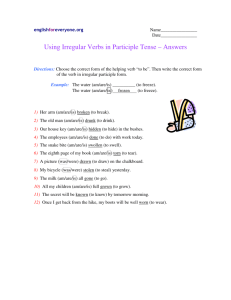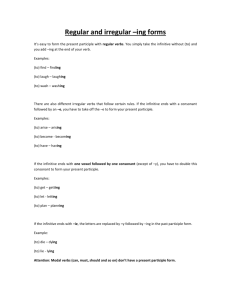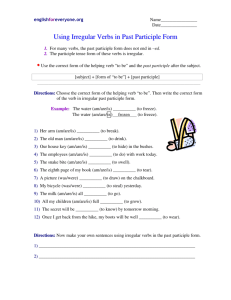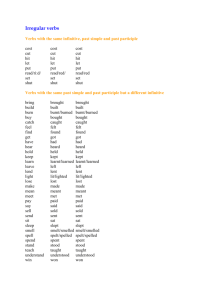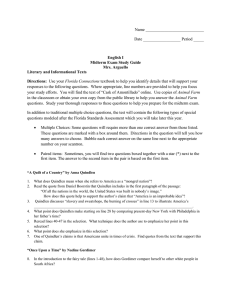Subject Verb Agreement
advertisement
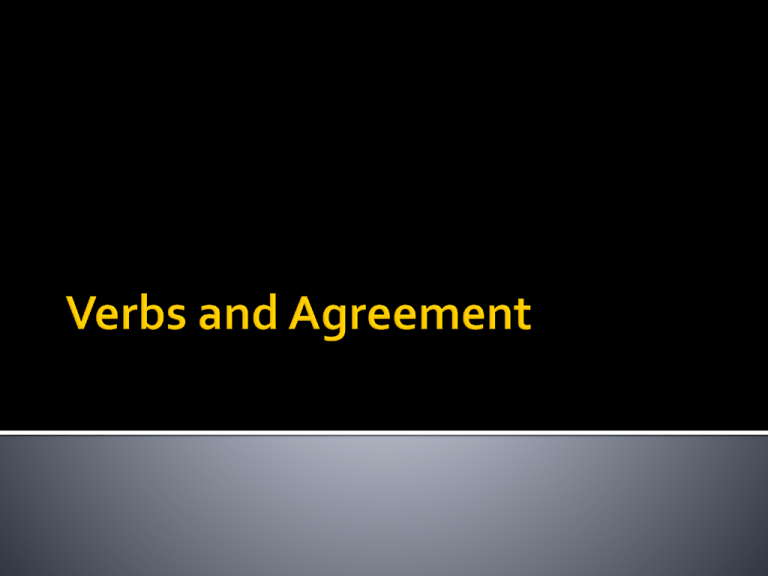
The four principal parts of a verb are as follows: Infinitive (base form) Present Participle Past Past Participle Infinitive: to work Present participle: (is) working Past: worked Past participle: (have) worked Helping verbs are used with the present participle and past participle to form some tenses. A regular verb forms its past and past participle by adding –d or –ed to the infinitive. Use/(is) using/used/(have used) Drown/(is) drowning/drowned/(have)drowned Irregular verbs form past and past participle in some other way than by adding –d or –ed. Ring/ring/rang/(have) rung Burst/burst/burst/(have) burst Complete Exercise 1, page 234 Complete Exercise 2, page 239 Take the diagnostic preview A on page 200. Number your paper from 1-10. Write the correct form of the verb next to the number. If it is correct as it is, write the letter C. Repeat these steps for the diagnostic preview B on page 201. Trade & grade when done. A verb should agree in number with its subject. Singular subjects take singular verbs ▪ Examples p 202 Plural subjects take plural verbs ▪ Examples p 203 In-class practice: Exercise 2, p 203. Homework: study the subject-verb agreement handout The number of a subject is not changed by a phrase or clause following the subject. See examples, pp 158, 159 Note: If the subject is the indefinite pronoun (all, any, more, most, none, or some), its number may be determined by the object of the prepositional phrase that follows it. All of the vegetables were peeled. (plural object) All of the salad was eaten. (singular object) The following pronouns are singular: Anybody, anyone, anything, each, either, everybody, everyone, everything, neither, nobody, nothing, no one, one, somebody, someone, and something. The following pronouns are plural: Both, few, many, and several The following may be singular or plural, depending on their meaning in a sentence All, any, more, most, none, and some Practice, exercise 5, p 207. A pronoun usually refers to a noun or another pronoun in a sentence. This word is called the antecedent. Example: Brian lost his book. Brian is the antecedent of his. A pronoun should agree in both number and gender with its antecedent.


